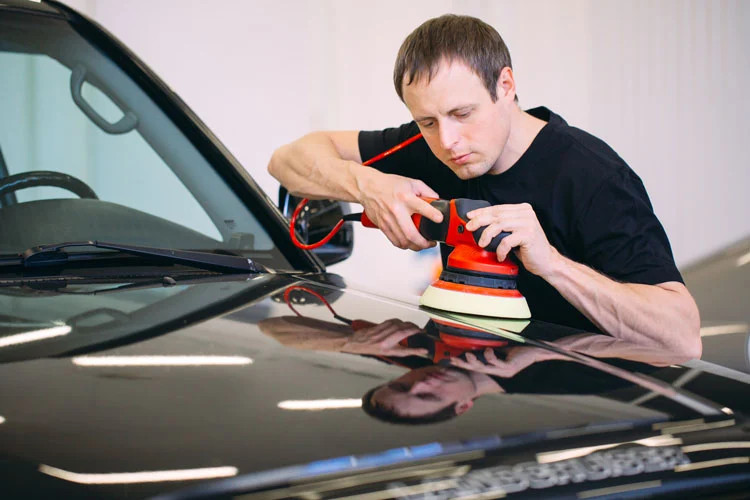How Long Does It Take To Fix A Car? Expert Guide

How Long Does It Take To Fix Car after an accident? The answer depends on several factors, but CARDIAGTECH.NET is here to provide clarity. We will explore typical repair durations, breakdown the collision repair process, and highlight elements influencing timelines, ensuring you’re well-informed about automotive repair times. Consider paint repairs, dent removal, and auto body work as crucial elements in this process.
1. Understanding Average Car Repair Times
When you’re wondering, “How long will it take to repair my car?”, remember that timeframes vary significantly based on damage extent and other considerations. Auto body repair times range from a few hours to several weeks. To give you a clearer picture, here’s a breakdown of average repair times for different types of damage:
 Car accident damage severity and repair time
Car accident damage severity and repair time
| Type of Collision Repair | Average Time to Fix |
|---|---|
| Minor Collision Repair | 1-3 days |
| Major Collision Repair | 1 to 3 weeks |
| Paintless Dent Repair | 1-2 days |
| Bumper Repair/Replacement | 1-3 days |
| Fender Repair/Replacement | 1-4 days |
| Door Repair/Replacement | 2-4 days |
| Glass Replacement | 1-2 days |
| Suspension Repair | 2-3 days |
| Frame Straightening | 4 days – 2 weeks |
| Paint Repair (minor) | 2-4 days |
| Paint Repair (major) | 1-2 weeks |
| Airbag Replacement | 2-5 days |
| Engine Repair/Replacement | 1-4 weeks |
| Full Vehicle Restoration | 4-8 weeks or longer |
2. Minor vs. Major Collision Repair: What’s the Time Difference?
The distinction between minor and major repairs significantly impacts the time your car spends in the shop. Let’s dive into the details:
2.1. Minor Collision Repair
Minor collision repairs usually take between 1 to 3 days and address cosmetic damages like small dents, scratches, or minor bumper issues. These fixes don’t typically affect the vehicle’s structural integrity, making them quicker to resolve. Often, these repairs require minimal labor and can be completed in just a few hours with the proper tools and replacement parts.
Consider these examples of minor collision damage:
- Shopping Cart Dents:
 Small dent in a car door from a shopping cart
Small dent in a car door from a shopping cart
- Tree Branch Scratches:
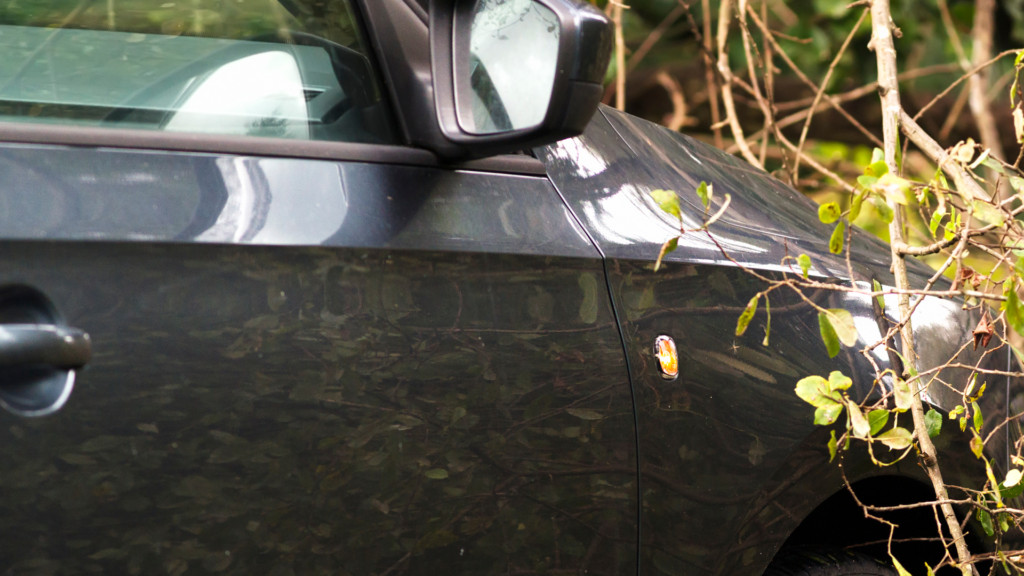 Light scratches on a car's paint from tree branches
Light scratches on a car's paint from tree branches
- Road Debris Scratches:
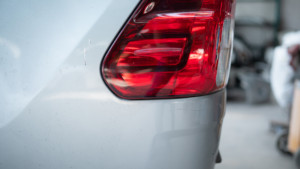 Minor paint chips and scratches on a car bumper
Minor paint chips and scratches on a car bumper
2.2. Major Collision Repair
Major collision repairs typically span from 1 to 3 weeks due to their complex nature. These repairs involve significant issues like frame damage, extensive mechanical work, or airbag replacements. These processes require specialized skills and possibly waiting for specific parts, which extends the overall repair time.
Common examples of major collision damage include:
- Rear-End Collisions:
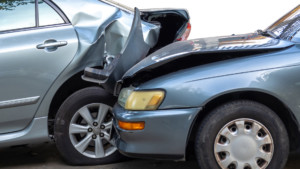 Severe rear-end damage with a crushed trunk and bumper
Severe rear-end damage with a crushed trunk and bumper
- Side-Impact (T-Bone) Collisions:
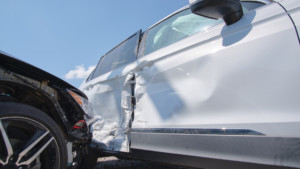 Significant side impact damage with a crushed door
Significant side impact damage with a crushed door
- Collisions with Poles or Barriers:
 Front-end damage from hitting a pole, including a bent fender
Front-end damage from hitting a pole, including a bent fender
2.3. Severe Collision Damage
For severe damage, such as extensive frame issues or the need for hard-to-find parts, repairs may exceed three weeks. The greater the damage, the more extended the repair timeline.
Examples of severe collision damage include:
- High-Speed Head-On Collisions:
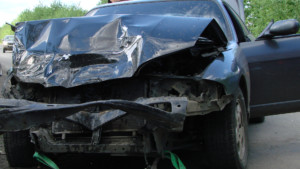 Extensive front-end damage with a crushed front and broken windshield
Extensive front-end damage with a crushed front and broken windshield
- Rollover Accidents:
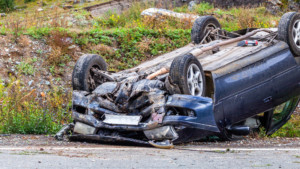 Car flipped over showing damage to the roof and sides
Car flipped over showing damage to the roof and sides
- High-Speed Side-Impact Collisions:
 Critical side impact with door and frame damage
Critical side impact with door and frame damage
3. Key Stages of the Car Repair Process
Understanding each stage can provide insight into why your car repair takes as long as it does:
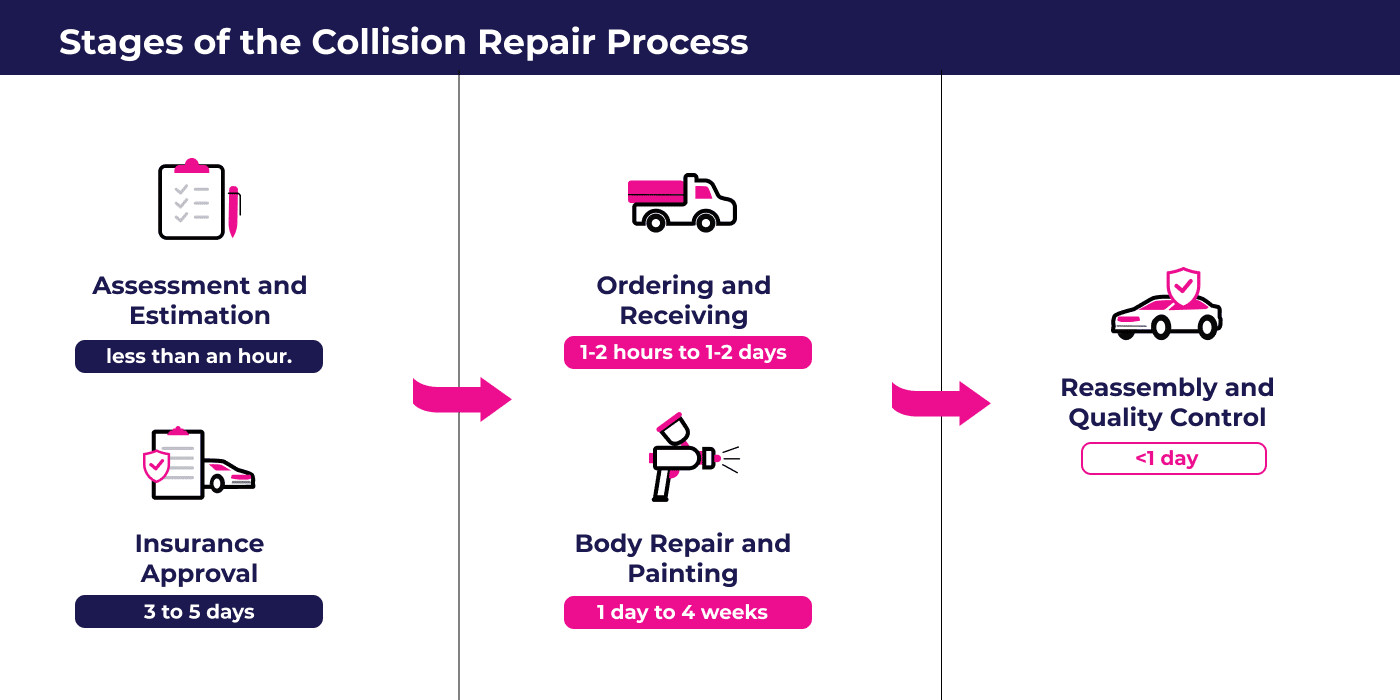 Different stages of auto collision repair
Different stages of auto collision repair
3.1. Assessment and Estimation
The first step involves a thorough examination of the damage. Repair facilities assess the damage, estimate repair costs and timeframes, document everything with photos, and provide you with a detailed repair estimate.
Timeframe: While many shops take several hours to a day for an accurate estimate, CARDIAGTECH.NET aims to provide estimates promptly.
3.2. Insurance Approval
If you’re using insurance, the estimate must be reviewed and approved by your insurance company. Negotiations may occur based on the required repairs and costs. This process can take several days, as the insurance company assesses whether the vehicle is repairable and if the repair costs are fair.
Timeframe: Typically, 3 to 5 days.
3.3. Ordering and Receiving Parts
Depending on the damage, the repair shop may need to order replacement parts. The time to receive these parts can vary from a few hours to several days, depending on their availability and location.
Timeframe: Ranges from 1-2 hours to 1-2 days.
3.4. Body Repair and Painting
This stage involves the physical repair of your vehicle. Technicians restore the vehicle to its original factory specifications, ensuring the frame is structurally sound. This includes dent removal, part replacement, and applying premium paint to restore the vehicle’s appearance.
Timeframe: From 1 day to 4 weeks, depending on the severity and complexity of the damage.
3.5. Reassembly and Quality Control
In this final stage, all detail pieces and moldings are reattached. The vehicle is then thoroughly cleaned and inspected to ensure everything looks great and functions correctly. All vehicle systems are checked for safety and performance.
Timeframe: A few hours to 1 day.
3.6. Hidden Damage and Additional Factors
During the repair, technicians might discover hidden or additional damage. Also, specialized repairs like frame straightening or wheel alignment may be needed, further extending the repair time. Supply chain issues and the shop’s workload can also affect wait times.
4. Factors Influencing Car Repair Time
Several factors can influence the repair time of your vehicle. Knowing these can help you anticipate how long your car might be in the shop.
 Different factors affecting collision repair time
Different factors affecting collision repair time
4.1. Severity of Damage
The extent of the damage is a primary determinant of repair time and cost. Minor issues, such as dents and scratches, are quicker and cheaper to fix, costing between $150 and $2,000. Major repairs, like frame or bumper damage, can escalate costs up to $30,000. While small repairs can be completed in hours, major repairs may take weeks. For instance, buffing out a scratch might take only an hour.
4.2. Availability of Replacement Parts
The accessibility of replacement parts significantly influences both cost and repair duration. Common parts are typically less expensive, priced from $100 to $3,000, and can be delivered swiftly, facilitating repairs within a few hours to a couple of days. Conversely, rare or custom parts can exceed $5,000 and may take days or weeks to arrive, prolonging the repair timeline.
The choice between OEM (Original Equipment Manufacturer) parts and aftermarket parts also matters. OEM parts may face backorder delays due to high demand, whereas aftermarket parts are generally more accessible but might not meet OEM quality standards, affecting durability. Selecting parts and dealing with potential backorders can further complicate repair costs and timing.
4.3. Type of Vehicle
The vehicle type plays a significant role in repair costs and timelines. Common vehicles from brands like Toyota, Honda, Ford, and Chevrolet usually have readily available aftermarket and OEM parts, making repairs faster and more affordable, typically costing between $500 and $3,000 and taking only a few days.
Luxury or rare vehicles, such as Mercedes-Benz, BMW, Audi, Lexus, and Tesla, often require specialized parts and technicians, increasing repair costs and potentially extending the time to several weeks, particularly if rare parts are required. Repairs for these brands can easily exceed $5,000.
Newer vehicles across all brands may benefit from quicker and more cost-effective repairs due to improved access to OEM parts and warranty coverage, reducing both time and costs.
4.4. Insurance Company Involvement
Involving insurance in collision repairs can add time due to claim processing and approval. Minor repairs under $1,000 are often quicker and cheaper to handle out-of-pocket. However, larger repairs, ranging from $1,500 to $5,000 or more, may require insurance claims, extending the repair time from days to weeks.
4.5. Repair Shop Workload
The workload of the auto repair shop significantly impacts repair timelines. A busy shop may cause delays, making it crucial to choose a reputable collision repair provider. Reputable shops offer quality work, transparent pricing, and avoid hidden fees. They may also provide services like insurance assistance and financing. Collision repairs typically range from $1,500 to $5,000, with repair times varying from a few days to several weeks, depending on the shop’s workload and the complexity of the repair.
5. CARDIAGTECH.NET: Your Partner in Efficient Car Repairs
Facing car repair challenges? You’re likely dealing with physical demands, chemical exposure, and constant learning to keep up with new automotive technology. You need services that improve work efficiency, cut repair times, and ensure accuracy and safety. CARDIAGTECH.NET is dedicated to providing tools and equipment that address these needs, helping you:
- Enhance Efficiency: Reduce repair times with advanced tools.
- Improve Accuracy: Ensure precise repairs with state-of-the-art equipment.
- Increase Safety: Protect yourself with reliable and safe tools.
- Boost Profitability: Streamline operations and increase customer satisfaction.
Ready to transform your repair process? Contact CARDIAGTECH.NET today for expert advice and solutions tailored to your needs. Reach us at:
- Address: 276 Reock St, City of Orange, NJ 07050, United States
- WhatsApp: +1 (641) 206-8880
- Website: CARDIAGTECH.NET
6. The Value of Investing in Quality Tools from CARDIAGTECH.NET
Investing in high-quality tools and equipment from CARDIAGTECH.NET translates into several key benefits that directly address the challenges faced by auto repair professionals. These tools are designed to enhance efficiency, accuracy, and safety, ultimately leading to increased customer satisfaction and profitability.
6.1. Reduced Repair Times
High-quality tools streamline the repair process, allowing technicians to complete tasks more quickly and efficiently. For example, advanced diagnostic tools can quickly pinpoint the source of a problem, reducing the time spent on troubleshooting. Similarly, precision tools ensure that repairs are done right the first time, minimizing the need for rework.
6.2. Enhanced Accuracy
Precision is critical in auto repair, where even small errors can lead to significant problems. CARDIAGTECH.NET offers tools designed for accuracy, ensuring that every repair meets the highest standards. This not only improves the quality of the work but also enhances the safety and reliability of the vehicle.
6.3. Increased Safety
Safety is paramount in any auto repair shop. High-quality tools are designed with safety features that protect technicians from injury. For example, ergonomic tools reduce the risk of strain and fatigue, while tools with built-in safety mechanisms prevent accidents.
6.4. Improved Customer Satisfaction
Customers value quick, accurate, and reliable service. By investing in quality tools, auto repair shops can provide a superior customer experience, leading to increased satisfaction and repeat business. Positive word-of-mouth and online reviews can further enhance the shop’s reputation and attract new customers.
6.5. Cost Savings
While high-quality tools may require a larger upfront investment, they can lead to significant cost savings in the long run. Durable tools last longer and require fewer replacements, reducing the overall cost of equipment. Additionally, efficient tools can reduce labor costs by allowing technicians to complete repairs more quickly.
6.6. Staying Competitive
The auto repair industry is constantly evolving, with new technologies and techniques emerging all the time. By investing in the latest tools and equipment, auto repair shops can stay ahead of the curve and remain competitive. This ensures that they can handle any repair job, regardless of complexity.
7. How CARDIAGTECH.NET Supports Your Auto Repair Needs
At CARDIAGTECH.NET, we understand the challenges you face as an auto repair professional. Our commitment is to provide you with the highest quality tools and equipment that meet your specific needs. We offer a comprehensive range of products designed to enhance your efficiency, accuracy, and safety.
7.1. Diagnostic Tools
Our diagnostic tools are designed to quickly and accurately identify problems, reducing the time spent on troubleshooting. From OBD-II scanners to advanced diagnostic systems, we have everything you need to diagnose and repair vehicles of all makes and models.
7.2. Repair Tools
Our repair tools are built to the highest standards of quality and durability. From hand tools to power tools, we offer a comprehensive selection of tools that can handle any repair job. Our tools are designed to be ergonomic and easy to use, reducing the risk of strain and fatigue.
7.3. Safety Equipment
Safety is our top priority. We offer a wide range of safety equipment, including protective gear, ventilation systems, and fire suppression systems. Our safety equipment is designed to protect you from injury and create a safe working environment.
7.4. Training and Support
We provide training and support to help you get the most out of your tools and equipment. Our team of experts is available to answer your questions and provide guidance on the best practices for auto repair.
8. Real-World Impact of Using CARDIAGTECH.NET Tools
To illustrate the tangible benefits of using CARDIAGTECH.NET tools, consider the following scenarios:
8.1. Streamlining Complex Repairs
Imagine a scenario where a vehicle comes into your shop with a complex electrical issue. Without advanced diagnostic tools, identifying the root cause could take hours, if not days. However, with CARDIAGTECH.NET’s advanced diagnostic tools, you can quickly pinpoint the problem, saving time and reducing labor costs.
8.2. Enhancing Precision in Critical Repairs
Consider a situation where a vehicle requires a critical engine repair. Precision is essential to ensure that the engine runs smoothly and efficiently. With CARDIAGTECH.NET’s high-quality repair tools, you can perform the repair with confidence, knowing that every component is properly installed and calibrated.
8.3. Ensuring Safety in Hazardous Environments
Envision a scenario where you are working on a vehicle with a leaking fuel system. The environment is hazardous, and even a small spark could ignite the fuel. With CARDIAGTECH.NET’s safety equipment, you can work with confidence, knowing that you are protected from potential hazards.
9. Testimonials from Satisfied Customers
Don’t just take our word for it. Here are some testimonials from satisfied customers who have experienced the benefits of using CARDIAGTECH.NET tools:
-
“CARDIAGTECH.NET has transformed our shop. Our technicians are more efficient, our repairs are more accurate, and our customers are happier than ever before.” – John S., Owner of a busy auto repair shop
-
“We used to struggle with complex electrical issues, but CARDIAGTECH.NET’s diagnostic tools have made it so much easier. We can now diagnose and repair vehicles in a fraction of the time.” – Mike B., Senior Technician
-
“Safety is our top priority, and CARDIAGTECH.NET has helped us create a safe working environment for our technicians. Their safety equipment is top-notch, and their training and support are invaluable.” – Sarah L., Safety Manager
10. Frequently Asked Questions About Car Repair Times
10.1. What transportation options are available while my car is in the shop?
Finding alternate transportation while your car is being repaired can be challenging. Check if your insurance policy covers a rental car. CARDIAGTECH.NET aims to minimize stress, offering pickup and drop-off services for eligible customers. For certain services, a free rental car may be provided if your insurance doesn’t cover the cost.
10.2. Does CARDIAGTECH.NET offer a warranty on automotive repairs?
Yes, CARDIAGTECH.NET provides a lifetime warranty on auto body work and accident repair services.
10.3. How does the repair time differ between front-end and rear-end collisions?
Rear-end repairs are often quicker and cheaper than front-end repairs due to the complexity of the front of the vehicle, which includes the grill, engine, radiator, and hood.
10.4. When is my car considered a total loss?
A car is typically considered a total loss when the repair costs exceed its value or around 70-75% of its value. The insurance company will only pay the vehicle’s value, and you must cover any remaining costs if you choose to repair it.
10.5. What should I do if repairs are taking longer than estimated?
If your mechanic is taking significantly longer than estimated, contact your insurance company about moving your vehicle to another garage. However, first, discuss the delays with your current shop to understand the reasons, such as insurance claim issues or part availability.
10.6. How much does collision repair cost?
Collision repair costs vary based on several factors. Contact CARDIAGTECH.NET for fast, free estimates to help you plan your transportation and budget.
11. Conclusion
In summary, answering “How Long Does It Take To Fix Car after a collision?” can range from a single day to several weeks, depending on various factors such as damage severity, vehicle type, and mechanic workload. Understanding the repair process can help manage expectations. For efficient and reliable collision repair, patience and a reputable auto repair service are crucial. Contact CARDIAGTECH.NET for all your auto repair tool needs and expert assistance.



